| back to current program | ||
| September 12, 2011 Stoney’s British Pub |
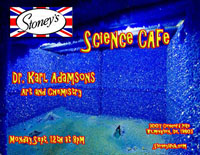 Dr. Karlis Adamsons, E.I. DuPont de Nemours Co Dr. Karlis Adamsons, E.I. DuPont de Nemours Co
“Art Verification & Preservation – The Analytical Toolbox Abstract: The Art World and the Analytical Toolbox has developed a close relationship over recent years. A long history exists where the verification (authentification if you prefer) must be carefully done to identify the artist and media and other origination detail. As one can readily imagine — there are those among us that would go to great lengths to create and claim a long lost work was found belonging to a famous artist. The good news is that many powerful (CSI like) analytical tools now exist to obtain high confidence as to paint/coating and substrate composition, thus confirming origins. Another key role for the Analytical Toolbox is in the area of preservation and cleaning. Mother nature has a well-deserved reputation of modifying artwork over longer periods, particularly surfaces, as a function of exposure time/conditions. These tools help identify what may be necessary to increase service life (or longevity) of the artwork, as well as the safest way to clean them without modifying the materials used by the artist. This presentation will provide a relatively short overview of the relationship between the Art World and the measurement technologies (Analytical Toolbox) making this all possible. |
|
| October 3, 2011 Stoney’s British Pub |
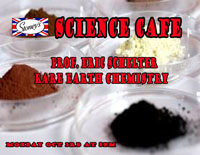 Eric Shelter Eric ShelterChemistry Department, University of Pennsylvania “What’s all the Fuss about Rare Earth Elements?” The rare earths elements: La–Lu, Y and Sc are irreplaceable components of compact fluorescent light bulbs, wind turbines generators, and hybrid and electric vehicles. For application, the rare earths must be separated into pure compoundsfrom their composite ores. China currently produces ~97% of all rare earths materials, though its geological holdings amount to ~37% of the estimated total global supply. The global market for rare earth elements is currently in crisisdue to a reduction of export quotas by the Chinese government. The talk will encompass the many applications of rare earths in modern society, the current global supply chain and outlook for this critical class of elements. |
|
| October 5, 2011 6:00pm The Peppermill Cafe
* related Science Café |
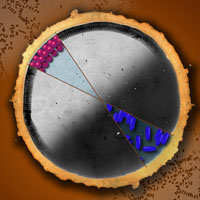 Peter Yunker Peter Yunkergraduate student in the Department of Physics and Astronomy in the School of Arts and Sciences “The Coffee Ring Effect: Silly-Sounding Research Goes a Long Way” As anyone who has ever spilled coffee knows, liquids that contain suspended particles tend to leave ring-shaped stains when they dry. Physicists have known what causes this “coffee-ring effect” for some time, but recent research by Yunker showed how simply changing the particles’ shape could prevent the effect. Though it sounds silly, this discovery has major implications in the many printing and manufacturing processes where even coatings are necessary. His paper, co-authored by Arjun Yodh, the director of Penn’s Laboratory for Research on the Structure of Matter, was recently featured on the cover of Nature, one of the world’s top scientific journals. Penn will also be presenting a new café series this year. The Penn Lightbulb Café will illuminate the social sciences, arts and humanities. The first Penn Lightbulb Café event is scheduled for Wednesday, Oct. 26, and will feature David Gibson, an assistant professor in the Department of Sociology, examining “Conversational Syntax, Turn-Taking, and the Fate of the World during the Cuban Missile Crisis.” The Penn Museum is located at 3260 South Street, Philadelphia, PA 19104. The Peppermill Café, on the Museum’s 2nd floor, can be accessed through the Kress Entrance on the east side closest to Convention Avenue. The Café events are free and open to the public, but RSVPs are encouraged. For more information or directions, contact Gina Bryan at 215-898-8721 or email bryangm@pobox.upenn.edu. |
|
| October 10, 2011 Dark Horse Pub |
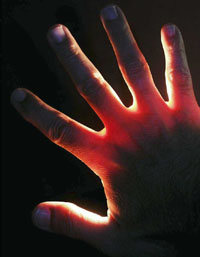 Professor Arjun Yodh Professor Arjun YodhJames M. Skinner Professor of Science and the Director of The Laboratory for Research on the Structure of Matter (LRSM) at the University of Pennsylvania, Department of Physics & Astronomy “Imaging inside the human body with light” Fundamental questions about how light travels through milky media have generated surprising insights. These optics discoveries have found applications in human physiology, including clinical monitors of blood flow in injured brain tissue, and detection, characterization and monitoring of breast cancer. |
|
| November 14, 2011 Dark Horse Pub |
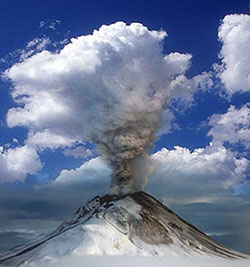 Bill Berner, University of Pennsylvania, Department of Physics & Astronomy Bill Berner, University of Pennsylvania, Department of Physics & Astronomy
“Why is a Cloud like a Volcano?”
A presentation of buoyancy and thermal convection that investigates why something floats and why heat can change whether something floats. What is found will be used to explain some of the most important behaviors in weather and geology. All ideas will include demonstrations, many of which can be reproduced with materials found in the home. |
|
| November 21, 2011 Stoney’s British Pub |
 Peter Collings, Physics, Swarthmore College Peter Collings, Physics, Swarthmore College“Liquid Crystals: An Oxymoron Necessary for Life and the Basis of Modern Displays” Liquid crystals are a phase of matter just like the more familiar phases of matter (solids, liquids, and gases). Yet the properties of liquid crystals are so unique that they are both the fundamental building blocks of biological structure and the basis for the displays found in laptop computers and flat panel televisions (LCDs). The reason for these extraordinary properties is that liquid crystals represent a natural, delicate balance between the absence of all molecular ordering found in liquids and the high degree of molecular ordering found in solids. Additional applications are already in use and more are on the way. |
|
| December 5, 2011 Dark Horse Pub |
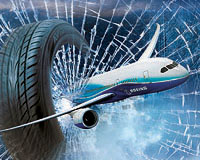 Zhara Fakhraai Zhara Fakhraai“What do bullet proof windows, silly putty, and tires have in common?” Polymers are incredible molecules with a wide range of mechanical properties that allows them to be tough and soft at the same time, depending on how you look at them. Polymers are long chains of molecules that can be tuned in length, chemical structure, and can also be networked to achieve a wide range of properties. The most impressive recent polymer miracle is “Boeing’s Plastic Dream Machine” or the Boeing 787, which is almost entirely made of polymers. We will discuss how it is possible to obtain such a wide range of properties from a single building block. |
|
| December 12, 2011 Stoney’s British Pub |
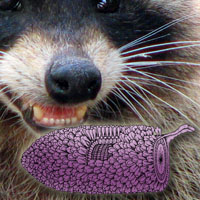 William Wunner, Wistar Institute, University of Pennsylvania William Wunner, Wistar Institute, University of Pennsylvania“Rabies – A perpetual killer disease of humans challenges scientists, public health officials and governments” One of the oldest known animal diseases and the cause of more human deaths of any of the known animal diseases continues to present significant challenges in the 21st Century to research scientists, veterinary and public health professionals, governments, educators, media, and lay people worldwide. Through the Global Alliance for Rabies Control, people from more than 85 countries are involved on all levels of society and ready to take some action toward global elimination of endemic rabies. This talk will highlight how research scientists locally met the challenge of a rapidly spreading ‘raccoon rabies’ throughout the mid-Atlantic states from Virginia to Canada from the early 1980’s and developed a vaccine that can be distributed in edible baits to control the spread of rabies in wildlife, especially raccoons. The situation of canine rabies control in developing countries of Asia and Africa will also be discussed. Of particular interest is the development of vaccines and treatments for rabies in humans that will contribute to the elimination of human deaths from canine rabies.
|
|
| January 16, 2012 Stoney’s British Pub |
Monika Mickute, Engineering, Drexel University “Design and Construction of a ‘Green Roof'” |
|
| January 23, 2012 Dark Horse Pub |
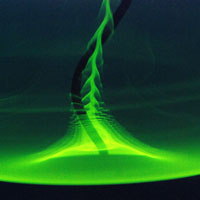 Paulo Arratia Paulo Arratia“How to Fly, Swim, and Mix the Milk in Your Coffee without Turbulence” As astute observers of nature, we have developed a quite sophisticated physical intuition of large bodies in motion. We can readily see airplanes moving through air, birds flying, fish swimming, water flowing in rivers, and baseballs curving.Our intuition for what we cannot directly see is obviously more limited. This is the world of in which micro-organisms move, electrons orbit, molecules rearrange, and red-blood cells flow, for example. This ‘small world’ is being re-examined by scientist and engineers, and exciting new technologies are emerging. |
|
| February 6, 2012 Dark Horse Pub |
 Arjun Yodh Arjun YodhJames M. Skinner Professor of Science and the Director of The Laboratory for Research on the Structure of Matter (LRSM) at the University of Pennsylvania, Department of Physics & Astronomy “Imaging inside the human body with light” Fundamental questions about how light travels through milky media have generated surprising insights. These optics discoveries have found applications in human physiology, including clinical monitors of blood flow in injured brain tissue, and detection, characterization and monitoring of breast cancer. |
|
| February 20, 2012 Stoney’s British Pub |
Kelvin Lee, Chemical Engineering, University of Delaware “The Future of Alzheimer’s Diagnosis and Treatment” |
|
| March 5, 2012 Stoney’s British Pub |
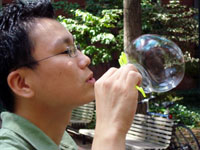 Daeyeon Lee, Chemical Engineering, University of Pennsylvania Daeyeon Lee, Chemical Engineering, University of Pennsylvania
“Beers, Bubbles, and Beyond” A bubble is a globule of one substance in another, usually gas in a liquid. Bubbles can be found ubiquitously in foodstuff. Beer head, for example, is composed of bubbles of gas such as carbon dioxide, rising to the surface. Imagine drinking beer of champagne that do not have any bubbles, it just will not be the same experience. Our group is exploring a way to use bubbles, which are typically transient matter, as “materials” in biomedical and acoustic engineering applications. I will discuss examples of using stable microbubbles in ultrasound theranostics agents to detect and treat cancer and of using bubbles to generate sound cancelling panels to enable “paper-thin” sound proof systems. |
|
| March 5, 2012 Dark Horse Pub |
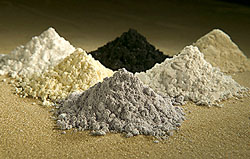 Eric Schelter Eric SchelterChemistry Department, University of Pennsylvania “What’s all the Fuss about Rare Earth Elements?” The rare earths elements: La–Lu, Y and Sc are irreplaceable components of compact fluorescent light bulbs, wind turbines generators, and hybrid and electric vehicles. For application, the rare earths must be separated into pure compoundsfrom their composite ores. China currently produces ~97% of all rare earths materials, though its geological holdings amount to ~37% of the estimated total global supply. The global market for rare earth elements is currently in crisisdue to a reduction of export quotas by the Chinese government. The talk will encompass the many applications of rare earths in modern society, the current global supply chain and outlook for this critical class of elements. |
|
| April 2, 2012 Stoney’s British Pub |
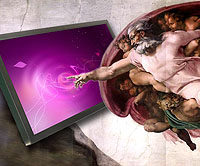 Karen Winey, Materials Science and Engineering, University of Pennsylvania Karen Winey, Materials Science and Engineering, University of Pennsylvania“Touch Screens – How to make Polymers into Metals” Have you ever thought about what happens when you touch a touch screen? In short, the device detects an electrical signal that indicates the position of the touch and the device performs the desired task. One class of the materials critical to touch screens is transparent electrical conductor, the most common of which is indium tin oxide (ITO). Two attributes of ITO are driving the search for new transparent conductors. First, indium is a rare element and consequently the cost is creeping upward. Second, the fabrication and mechanical brittleness of ITO restrict its use to rigid devices. The hunt for replacement materials is underway and we are pursuing transparent conductors based on metal nanowires embedded in polymer (plastics). We’ll discuss touch screens, ITO, and how to predict the performance of polymer nanocomposites. |
|
| April 9, 2012 Dark Horse Pub |
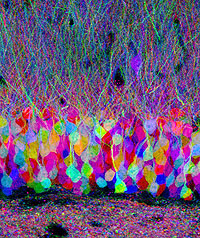 Photo: Jeff Lichtman, Harvard University: en.wikipedia.org/wiki/Brainbow Philip Nelson Scientists often seem to be asking obscure theoretical questions. But sometimes, asking such questions and doggedly following the answers leads to unexpected practical payoffs, as well as deep insights into how the world works. I’ll explore how the question, “What is light?” leads us to an understanding of how we see, and also to some powerful new ways to see things. These advances have recently given us breathtaking results in biomedical imaging, and new ways to break through a resolution barrier that had been thought sacred for over a hundred years. |
|
| May 7, 2012 Dark Horse Pub |
 James Petersson James Petersson“What if Shrek was a protein? Applying the concepts of motion capture animation to the study of neurodegenerative disease” We have has shown that the thioamide, a single-atom substituent on of the peptide backbone, can be used as a probe to monitor structural changes in proteins. One of the great challenges facing biochemists today is to understand the folding and structural dynamics of proteins. It is clear that the static images of protein structure obtained by X-ray crystallography are often insufficient for mechanistic characterization; many proteins require complex structural rearrangements for function. Fluorescence spectroscopy allows one to observe protein motions on the nanosecond timescale, but the relatively large size of most probes (fluorophores) raises the concern that the label itself alters the observed motion. If optical probes can be made sufficiently small, they can provide the time and structural resolution necessary to truly dissect protein motions. The thioamide is a nearly optimal label: extremely small and compatible with virtually any position in the protein sequence. |
|
| May 14, 2012 Stoney’s British Pub |
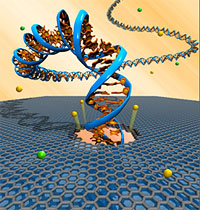 Robert Johnson Robert JohnsonPhysics & Astronomy, University of Pennsylvania “Ultrafast DNA sequencing – Speed reading the blueprint of life” The blueprints of a living creature are stored in long, chainlike molecules known as DNA. These blueprints are written in a code format using four chemical bases called A, C, G and T. The particular sequence of these bases determines almost everything about the creature including what type of creature it is, what it eats, what it looks like and how long it lives. We can learn an extraordinary amount about a living organism by reading the sequence of bases in its DNA. However, the number of bases in an organism’s DNA can be enormous and reading them all can be time consuming and expensive. For example, human DNA contains about 3 billion bases. The first complete sequence of human DNA was obtained in 2003 after about 12 years of work costing almost $3 billion. Cheaper, faster and more reliable methods to sequence DNA are highly desirable. These methods would not only facilitate biological research but also revolutionize medicine and personal healthcare. The ability to speed-read DNA could be achieved by threading DNA molecules through small holes in graphene (pictured above), a material closely related to graphite (pencil lead). In this talk I will describe current research towards the development of ultrafast DNA sequencing technology and how such technology could impact society. |
